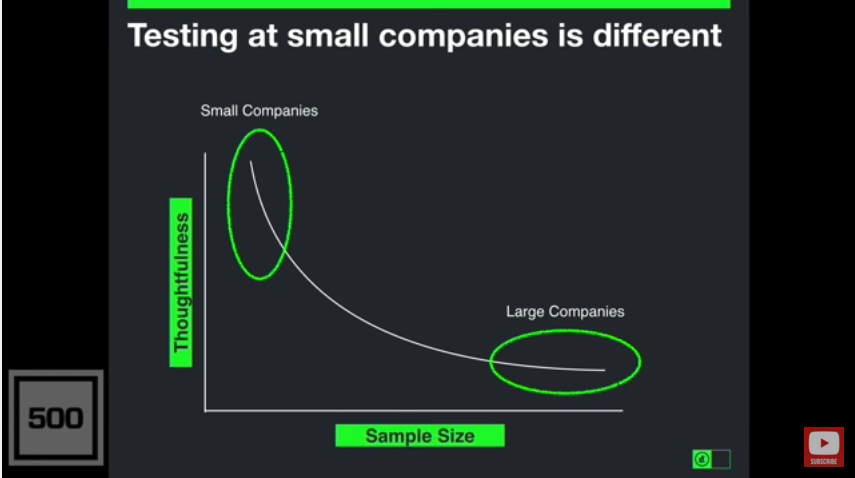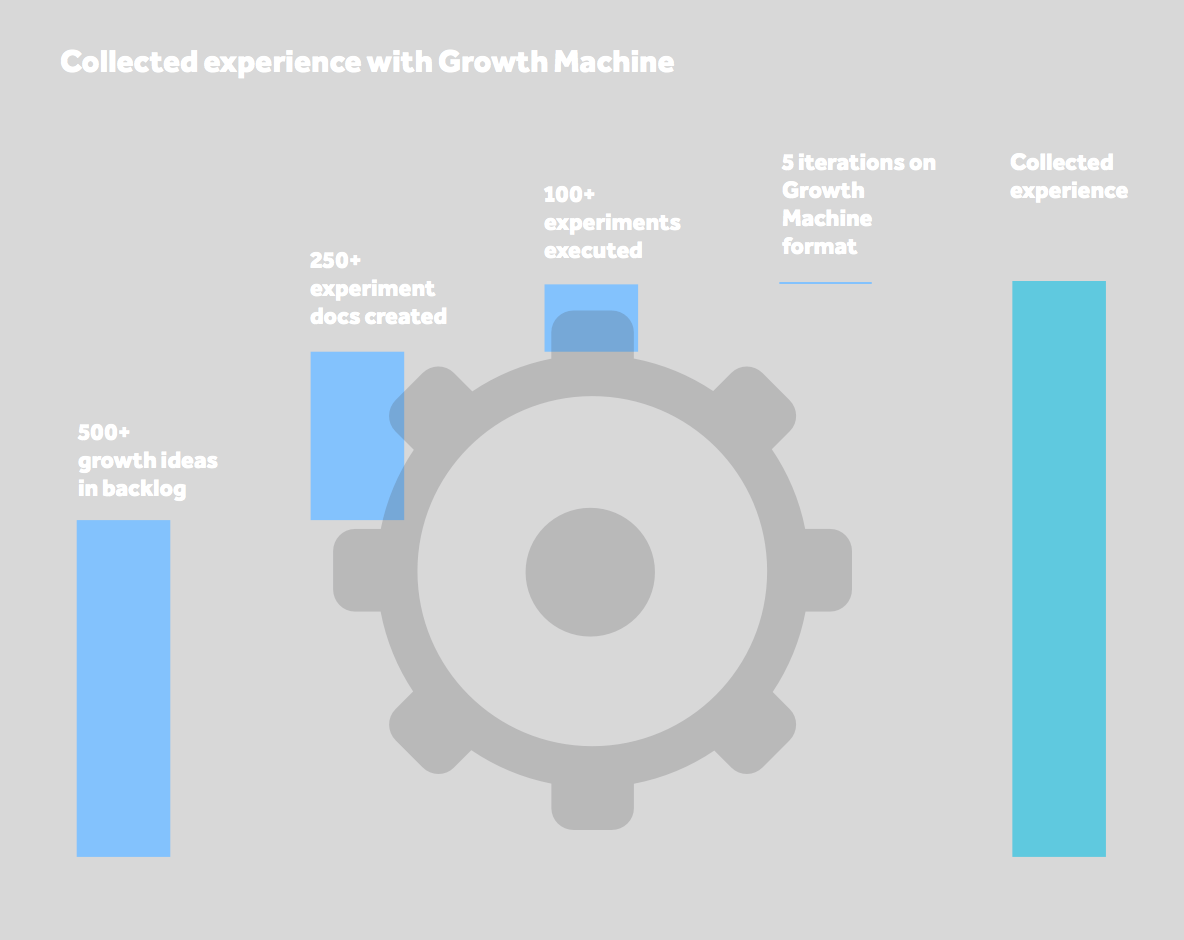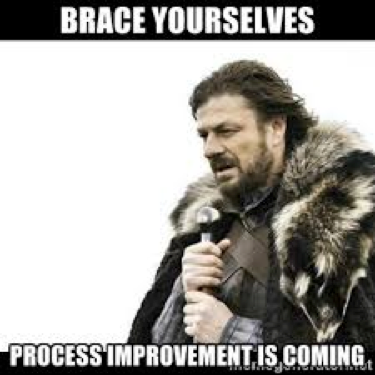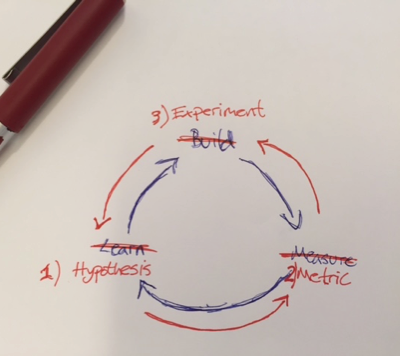This is not another post claiming to teach you a secret hack for how to improve your conversions by 100% in three days — that’s bullshit.
I am pleased to present Growth Machine (visit the link to gain free access to the templates introduced below). Growth Machine is an operational process for executing marketing activities, ensuring a structured approach. It focuses on learning and understanding the reason behind success and failure — the “why”. Furthermore, it facilitates preparation, prioritisation, alignment and knowledge sharing.
Think it sounds boring? Well, welcome to the real world behind the flashy growthhackers.com headlines.
Growth Machine is a process that anybody can use but that few succeed in using. I am still struggling. It takes discipline and hard work. But, if you apply and follow the principles, they will significantly change your long-term understanding of how to distribute your product most optimally. It might even lead you to those silver bullets.

Why do I need a process? I am an entrepreneur…
When building a company, product is key, obviously. But it is not everything. Actually, it is only half. The other half is distribution (sales + marketing). No, distribution cannot save a shitty product, but a great product will not get anywhere with shitty distribution. And NO, viral is not a strategy. So, let’s take distribution fucking serious.
“Sales matters as much as product.” — Peter Thiel
Leonardo Da Vinci once said something about copying. I am all for it. But what we need to realize is that copying other companies’ growth tactics will not take us that far.
“On a micro level, each major channel is going through an incredible amount of changes. What worked on Facebook Ads 90 days ago doesn’t work today. I highly doubt what works today, will work in 90 days.” — Brian Balfour
This graph from James Currier illustrates this issue very well.

Even if we could copy, it wouldn’t work. You know why? Volume! Traffic! Traction! All these growth hack fairytales about Uber, AirBnB and Dropbox are all very breathtaking and fascinating. However, many of the tactics used are based on access to an obscene amount of recipients, visitors, sign-ups, etc. Most of us can’t just look at data to see what works. We simply can’t get to statistical significance (which is a very important concept). Instead, we have to be thoughtful in all that we do.
Andrew Johns, CMO at Wealthfront, addressed this idea in his talk at WMD 2015.
“The number one limitation that we face is a sample size limitation” — Andrew Johns

David Barret, Expensify’s CEO, echoes that thought.
“Don’t wait for the data, nor pretend what little data you have is more significant than it is. Experiment and act decisively on data that excites you.” — David Barret
We agree on the following ideas:
We need a process to capture knowledge and guide us.
So what is this Growth Machine? Basically, the Growth Machine format is a Google sheet. However, it’s more than that. It’s a mindset, a way of working and a belief…

For the past two or three years, I have worked with the Growth Machine process and mindset. It has been refined through rigorous work with five early-stage companies.

In short, the Growth Machine has helped me in the following areas:
(Full disclosure: As I will elaborate later, the Growth Machine is very much inspired by several sources that I admire very much. Optimisation has been made for early-stage and less traffic-heavy companies.)
It all started when I was part of building gobox.me, which is a full-service storage solution. We didn't have any proces for growing the business. It resulted in many random activities that were not prioritised, aligned or tracked. We didn’t learn anything.
We were wandering around in the dark, and we desperately needed some light. We needed direction, a structure, a process.

I started to look for a way out of the dark, and three aspects led to what Growth Machine is today.
Development tracking tools
Existing frameworks
Vision of a hypothesis-driven approach

Let it be said that I think the term ‘growth hacking’ serves a purpose.
I see the point of naming this new discipline, which enables innovative and product-focused distribution. Unfortunately, growth hacking has been associated with short-term, unsustainable, top-of-funnel (AKA marketing) tactics.
Growth Machine addresses the need for a process to ensure that single tactics will be tied together in a long-term, sustainable growth strategy.
Growth Machine can seem like unnecessary work. This is not the goal. I am a big fan of #DoMoreFaster. I do not advocate any kind of academic/theoretical approach. However, I strongly believe that preparation and prioritisation is the single most important element for success.
“One thing I always say is that in a lot of cases, the order of operations does matter. Especially in highly competitive startup spaces.” — Brian Balfour
Proper preparation enables:
Growth Machine is made up of three pillars: 1) the backlog, 2) the experiment document and 3) the pipeline.
The following will introduce the standard operating procedure for Growth Machine.
The backlog is where all growth ideas are placed. When you get a “good” idea, don’t EVER just start executing it. Always put it in the backlog and focus on what you were doing (see below for an overview of how to work with Growth Machine).
All ideas are quickly screened based on these seven simple parameters:
The backlog has been sorted according to Dave McClure’s AARRR structure: Awareness/Acquisition — Activation — Retention — Revenue — Referral. It allows you to visualise where you might be a bit thin in the funnel.
Case: You’ve stumbled upon a growthhackers.com post on how Company X grew their monthly recurring revenue (MRR) by Y% by doing Z.

The next step is to write an experiment document.
The experiment document has one major purpose: to make us write things down. MD at TechStars, NY Alex Iskold put its perfect
“I dislike bureaucracy and over process, but I love writing things down.” — Alex Iskold
It is the oldest trick in the book, and it works like magic
An experiment document is simply a one-page document. It lists key subjects to consider before executing a marketing experiment. The sections are as follows:

The third and final stage of an experiment is the pipeline.
The pipeline provides an overview of all ongoing experiments, all of which are scored on the following factors:

The pipeline helps ensure:
See a video of me explaining Growth Machine at Nordic Growth Hackers (older version).
Yes, every business is different and unique. No, there is not one standard process that works for everyone. How to use Growth Machine is something you and your team will need to determine — and how you use it will change as you go along. Most important is that you use it.
See below for how I apply Growth Machine.

This might be a bit cheesy, but Abraham Lincoln once said, “Give me six hours to chop down a tree, and I will spend the first four sharpening the axe.”
Those who prepare well will succeed. This is a universal truth, and there is no way around it.
— — — —
All templates are available for free at http://growth.founders.as/growth-machine.
Feedback
All feedback, especially negative, is very much appreciated. Thank you.
I would love to better understand how you work with growth. Please take this one-minute survey